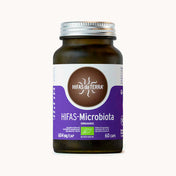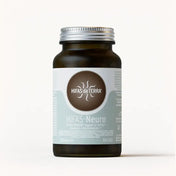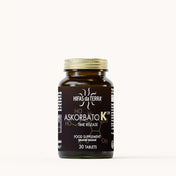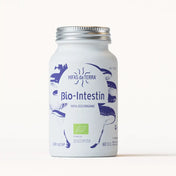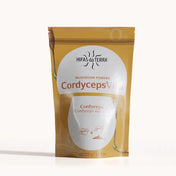
In it
World Parkinson Day It is intended to sensitize the importance of this disease, emphasizing the symptoms that most affect the daily lives of people who suffer from it: stiffness and bradykinesia (slowness in movements). This year we wanted to highlight the importance of music and dance in overcoming some day -to -day barriers, favoring motor skills.
Parkinson was described by Dr. James Parkinson in 1917, with the name of "agitating paralysis." It is a chronic disease that affects the nervous system, specifically characterized by the degeneration of a type of brain cells responsible for producing dopamine, neurotransmitter involved in the correct control of movements. However, the etiology of this disease seems to be redefining since the affectation of several systems such as limbic and somatosensory has been discovered.
Origin of the disease
Its cause is unknown and, despite the fact that multiple genetic factors are recognized in its appearance, current scientific knowledge in genetics only allow to explain just under 10 % of all cases that appear. This disease is identified by the symptoms presented by the people who suffer from it: tremors, muscle stiffness, postural abnormalities and balance disorders.
The Parkinson's equally affects men and women but in a matter of age, the people who are in the range between 40 and 70 years are those who are especially affected (a significant number of diagnoses are given after 65 years), despite the fact that younger and more young patients with confirmed diagnosis are becoming more and Consider a "rare disease."
The really worrying thing in these situations are the problems associated with the disease and that affect the quality of life of patients: sleep disorders, chronic fatigue, muscle pains, cognitive and depressive disorders, respiratory problems, etc., which make these patients become dependent from the IV stadium that curbs with serious inability.
Mycotherapy and Parkinson
Unfortunately, since it is a chronic disease, it has no cure, but there are options to treat it, such as antiparkinsonian drugs, which act at the neuronal level, or those that soften the symptoms, some surgical interventions and complementation with rehabilitation and natural therapies.
We will highlight mycotherapy, within which we can use the extract of
León hair -Hericium Erinaceus-, medicinal fungus that has shown to have mechanisms for myelin and nerve tissue (Mori
et al. 2008), as well as in the treatment of depressive episodes and anxiety (Nagano
et al. 2010).
On the other hand, Reishi -Ganoderma lucidum- I would complete the mycotherapy treatment, thanks to its use as a natural anti -inflammatory, showing remarkable results in patients with artically affected arthritis pains (li
et al. 2007) and as anxiolytic, improving depressive behaviors (Matsuzaki
et al. 2013), what will be of vital importance, since the
European Parkinson disease association It reflects that depressive symptoms in these patients (84 %) are almost as frequent as motor disorders (94 %).
References:
 In it World Parkinson Day It is intended to sensitize the importance of this disease, emphasizing the symptoms that most affect the daily lives of people who suffer from it: stiffness and bradykinesia (slowness in movements). This year we wanted to highlight the importance of music and dance in overcoming some day -to -day barriers, favoring motor skills.
Parkinson was described by Dr. James Parkinson in 1917, with the name of "agitating paralysis." It is a chronic disease that affects the nervous system, specifically characterized by the degeneration of a type of brain cells responsible for producing dopamine, neurotransmitter involved in the correct control of movements. However, the etiology of this disease seems to be redefining since the affectation of several systems such as limbic and somatosensory has been discovered.
Origin of the disease
Its cause is unknown and, despite the fact that multiple genetic factors are recognized in its appearance, current scientific knowledge in genetics only allow to explain just under 10 % of all cases that appear. This disease is identified by the symptoms presented by the people who suffer from it: tremors, muscle stiffness, postural abnormalities and balance disorders.
The Parkinson's equally affects men and women but in a matter of age, the people who are in the range between 40 and 70 years are those who are especially affected (a significant number of diagnoses are given after 65 years), despite the fact that younger and more young patients with confirmed diagnosis are becoming more and Consider a "rare disease."
The really worrying thing in these situations are the problems associated with the disease and that affect the quality of life of patients: sleep disorders, chronic fatigue, muscle pains, cognitive and depressive disorders, respiratory problems, etc., which make these patients become dependent from the IV stadium that curbs with serious inability.
Mycotherapy and Parkinson
Unfortunately, since it is a chronic disease, it has no cure, but there are options to treat it, such as antiparkinsonian drugs, which act at the neuronal level, or those that soften the symptoms, some surgical interventions and complementation with rehabilitation and natural therapies.
We will highlight mycotherapy, within which we can use the extract of León hair -Hericium Erinaceus-, medicinal fungus that has shown to have mechanisms for myelin and nerve tissue (Mori et al. 2008), as well as in the treatment of depressive episodes and anxiety (Nagano et al. 2010).
On the other hand, Reishi -Ganoderma lucidum- I would complete the mycotherapy treatment, thanks to its use as a natural anti -inflammatory, showing remarkable results in patients with artically affected arthritis pains (li et al. 2007) and as anxiolytic, improving depressive behaviors (Matsuzaki et al. 2013), what will be of vital importance, since the European Parkinson disease association It reflects that depressive symptoms in these patients (84 %) are almost as frequent as motor disorders (94 %).
References:
In it World Parkinson Day It is intended to sensitize the importance of this disease, emphasizing the symptoms that most affect the daily lives of people who suffer from it: stiffness and bradykinesia (slowness in movements). This year we wanted to highlight the importance of music and dance in overcoming some day -to -day barriers, favoring motor skills.
Parkinson was described by Dr. James Parkinson in 1917, with the name of "agitating paralysis." It is a chronic disease that affects the nervous system, specifically characterized by the degeneration of a type of brain cells responsible for producing dopamine, neurotransmitter involved in the correct control of movements. However, the etiology of this disease seems to be redefining since the affectation of several systems such as limbic and somatosensory has been discovered.
Origin of the disease
Its cause is unknown and, despite the fact that multiple genetic factors are recognized in its appearance, current scientific knowledge in genetics only allow to explain just under 10 % of all cases that appear. This disease is identified by the symptoms presented by the people who suffer from it: tremors, muscle stiffness, postural abnormalities and balance disorders.
The Parkinson's equally affects men and women but in a matter of age, the people who are in the range between 40 and 70 years are those who are especially affected (a significant number of diagnoses are given after 65 years), despite the fact that younger and more young patients with confirmed diagnosis are becoming more and Consider a "rare disease."
The really worrying thing in these situations are the problems associated with the disease and that affect the quality of life of patients: sleep disorders, chronic fatigue, muscle pains, cognitive and depressive disorders, respiratory problems, etc., which make these patients become dependent from the IV stadium that curbs with serious inability.
Mycotherapy and Parkinson
Unfortunately, since it is a chronic disease, it has no cure, but there are options to treat it, such as antiparkinsonian drugs, which act at the neuronal level, or those that soften the symptoms, some surgical interventions and complementation with rehabilitation and natural therapies.
We will highlight mycotherapy, within which we can use the extract of León hair -Hericium Erinaceus-, medicinal fungus that has shown to have mechanisms for myelin and nerve tissue (Mori et al. 2008), as well as in the treatment of depressive episodes and anxiety (Nagano et al. 2010).
On the other hand, Reishi -Ganoderma lucidum- I would complete the mycotherapy treatment, thanks to its use as a natural anti -inflammatory, showing remarkable results in patients with artically affected arthritis pains (li et al. 2007) and as anxiolytic, improving depressive behaviors (Matsuzaki et al. 2013), what will be of vital importance, since the European Parkinson disease association It reflects that depressive symptoms in these patients (84 %) are almost as frequent as motor disorders (94 %).
References:



